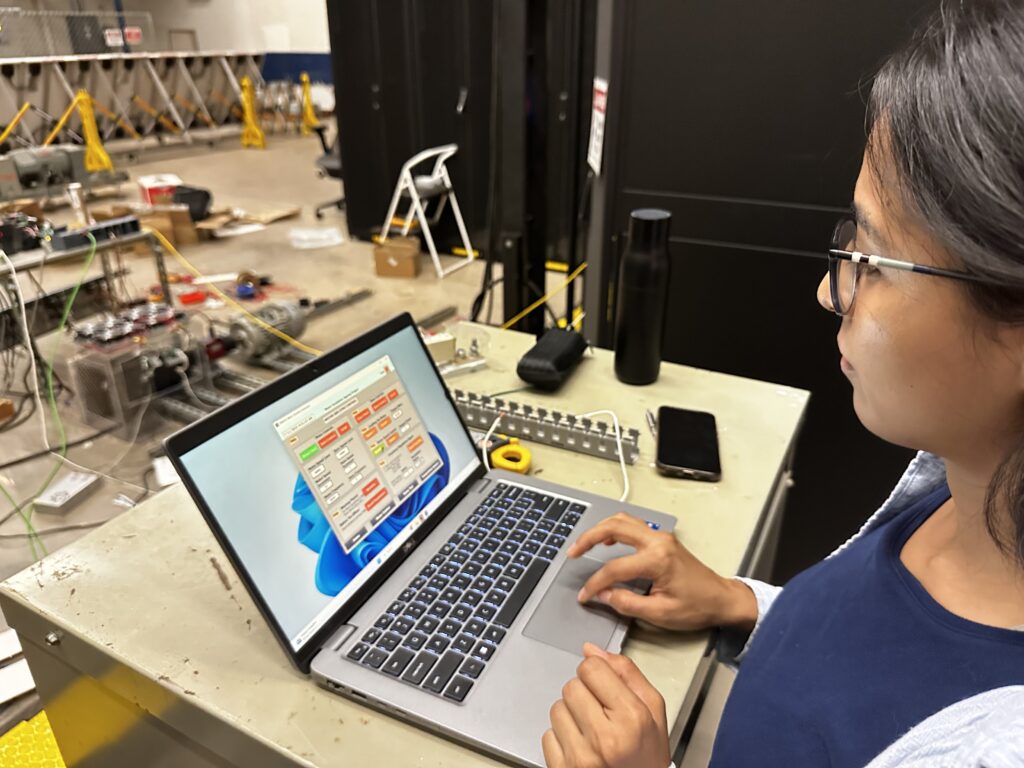The Power Quality & Resilience Laboratory (PQR Lab) led by Dr. Paul Moses is actively engaged in research in the following areas: renewable energy systems integration, enhancing resiliency in smart grids, chaotic and dynamical electromagnetic transient interactions, smart power protection and electrical insulation degradation of electrical machinery operating in distorted electrical environments. We have expertise in detailed electromagnetic transient and dynamic modeling of power devices, diagnostic and condition monitoring of insulation systems and systems integration of sustainable energy resources.
- Insulation aging studies of electrical machinery operated under harmonically distorted conditions

- Dynamical and chaotic disturbances of inverter-based sustainable technologies interacting with electrical machines and transformers

- Mitigation approaches for nonlinear electromagnetic transient disturbances

- Oklahoma Infrastructure Resilience (OK NSF EPSCoR Track-1 RII Award – Socially Sustainable Solutions for Water, Carbon, and Infrastructure Resilience in Oklahoma)
- Improvement of power quality in transmission and smart grid distribution systems

- Optimization and coordination of distributed generation and consumers in smart grids

- Improvement of protection systems under variable renewable generation conditions

- Shipboard power and energy systems for naval and commercial vessels

Power Quality & Resilience Laboratory
The Power Quality and Resilience Laboratory (PQR Lab) led by Dr. Paul Moses is located 3.5 miles away from Norman campus at North campus, an OU research facility near the Max Westheimer Airport in Norman.
PQR Lab high bay facility consists of upgraded electrical infrastructure to support high capacity distribution circuits and large-scale power apparatus. The high bay deck is zoned for low-to-medium voltage testing to support industrial testing of power apparatus such as inverter-based resources (e.g., solar photovoltaics and battery energy storage), transformers and rotating machines.
In addition to various ac/dc bench top variable power supplies, the laboratory has a 480 V three-phase feeder which is serviced by a dedicated 12.47 kV / 480 V transformer. 480 V and 208 V three-phase sources are available throughout the facility. The total testing power available is approximately 400 kVA. The facility has a fully instrumented control room with state-of-the-art protection, automation and control systems that realize supervisory control and data acquisition (SCADA) of cyber-physical systems used in utilities.



Energy Storage
The laboratory is equipped with two Lithium-Ion battery energy storage units that were furnished by Spiers New Technology. Each WattTower is rated at 400 Vdc, 56 kWh and a peak power of 57 kW. When paired with their respected inverters, these distributed energy resources can act as energy sources or sinks at various power factors enabling rapid 4 quadrant capability for electrical tests.

Solar Photovoltaic Systems
Donated Siemens solar photovoltaic panels, courtesy of Emeritus Professor Dr. John Fagan, are being used for solar photovoltaic integration studies along with IEEE 1547 compliant 3 kW KACO-5002 and 5 kW Solectria single-phase inverters donated by Oklahoma Gas & Electric Corp.

Software
The laboratory has a suite of power system simulation and analysis tools including MATLAB-Simulink/Simscape, ETAP, EMTP-RV, PSCAD, Windmil, PowerWorld, PSS Sincal, PSS-E, Grid Scale X and National Instruments-LabView. Additionally, the lab SCADA system uses a combination of Schweitzer Engineering Laboratories, Siemens and Wago real-time automation software.
Support and Acknowledgement
Moses Lab sincerely acknowledges the support from the following organizations for their financial and equipment contributions toward our research efforts:

















